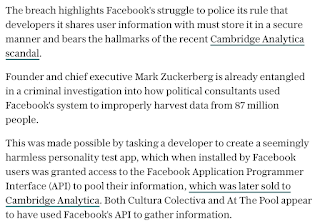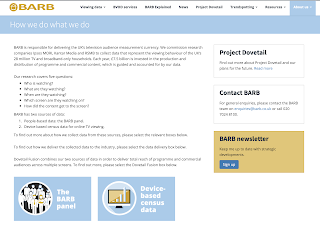News research
News Research:
ITV Monday 20th 2020 18:00 - ITV Anglia
The studio is big and open with a desk for the newsreaders and a screen of to the side for the weather. The title sequence has a couple of clips pop up with various filters, ending on a video of wind turbines accompanied with some funky music. There were a fair few stories, starting with the coronavirus update before moving on to a more light hearted story about an older gentleman helping out his community. It flipped back and forth between good and bad stories with the weather report about halfway through.
April 23rd:
April 23rd is Shakespeare Day, as well as St. George’s Day.
News values:
News values are “Criteria that influence the selection and presentation of events as published news”.
The 12 values are:
Frequency - shorter solved stories are preferred over longer developed stories like famines and droughts.
An example of this is Captain Tom Moore's 100th birthday and his NHS fundraiser, as they span one day.
An example of this is Captain Tom Moore's 100th birthday and his NHS fundraiser, as they span one day.
Threshold - How big and important an event is.
An example of this is the recent COVID-19 pandemic Which is very important and is dominating the news at the moment and has been for months now.
An example of this is the recent COVID-19 pandemic Which is very important and is dominating the news at the moment and has been for months now.
Unambiguity - stories must be publicly accessible, meaning more advanced ones could be simplified.
An example of this is a short article on a minutes silence for fallen key workers, which isn't too hard for the public to understand what the story is about.
An example of this is a short article on a minutes silence for fallen key workers, which isn't too hard for the public to understand what the story is about.
Meaningfulness - how much does it effect the audience; the proximity and relevance are taken into account.
An example of this is a story on schools during the pandemic, when they re-open and how they can keep children safe from COVID. This is both relevant to the British public and in close proximity to them.
An example of this is a story on schools during the pandemic, when they re-open and how they can keep children safe from COVID. This is both relevant to the British public and in close proximity to them.
Exclusivity - A story a news organisation can get that no others can mean more people will use that source.
An example of this is an exclusive ITV interview with Meghan Markle, the duchess of Sussex about how she's coping with the negative press and tabloids.
An example of this is an exclusive ITV interview with Meghan Markle, the duchess of Sussex about how she's coping with the negative press and tabloids.
Unexpectedness - The rarity of an event actually happening; must still be relevant to the meaningfulness value.
An example of this is a double rainbow that appeared across the UK during a clap for the NHS and key workers risking their lives to keep the country afloat during the pandemic.
An example of this is a double rainbow that appeared across the UK during a clap for the NHS and key workers risking their lives to keep the country afloat during the pandemic.
Continuity - if a story is important it must be covered again and given updates.
An example of a story that required updates was the Tham Luang cave rescue from July 2018, which spanned 18 days of a near impossible rescue of a junior football team trapped in a flooded cave in Thailand.
An example of a story that required updates was the Tham Luang cave rescue from July 2018, which spanned 18 days of a near impossible rescue of a junior football team trapped in a flooded cave in Thailand.
Composition - Balance between good and bad news, foreign and domestic, cats and dogs must be maintained.
An example of this is stories on COVID being on not only the UK but other places like Italy and the USA; COVID updates including stories of local heroes helping out their communities between bad news about the virus.
An example of this is stories on COVID being on not only the UK but other places like Italy and the USA; COVID updates including stories of local heroes helping out their communities between bad news about the virus.
Reference to elite nations - news stories reporting on the developed world is more likely to be covered; developing countries and newly emerging economies would be reported on if it reached a high threshold rating.
An example of this is countries like the USA and China are being reported on more than smaller countries that have been hit hard by COVID-19 like Iran.
An example of this is countries like the USA and China are being reported on more than smaller countries that have been hit hard by COVID-19 like Iran.
References to elite persons - famous and powerful people are more newsworthy than any Tom, Dick or Harry off the street.
An example of this is Boris Johnson, the current prime minister (an elite individual), who has just had a son born which is a story that has been reported on a lot today (29/04/2020).
An example of this is Boris Johnson, the current prime minister (an elite individual), who has just had a son born which is a story that has been reported on a lot today (29/04/2020).
Personalisation - events are given a person to blame as an individual, for instance if Facebook appeared in a news story its more than likely Zuckerberg will be targeted over the company.
As an example, like mention before, last years Facebook's data breach scandal, where Mark Zuckerberg was on a criminal investigations trial.
As an example, like mention before, last years Facebook's data breach scandal, where Mark Zuckerberg was on a criminal investigations trial.
Negativity - bad news is good publicity, as it can be aired with a much lower threshold and relevance than a positive event.
An example of this is a report on the government lying about the number of PPE available to fight coronavirus by double counting gloves.
An example of this is a report on the government lying about the number of PPE available to fight coronavirus by double counting gloves.














Comments
Post a Comment